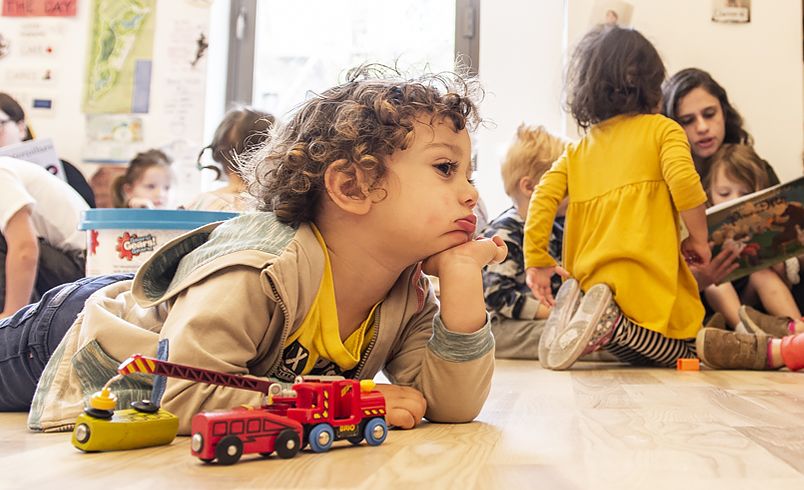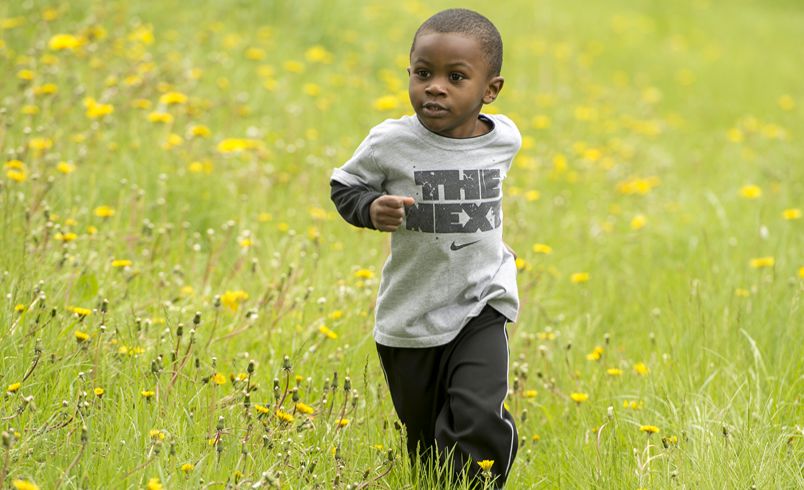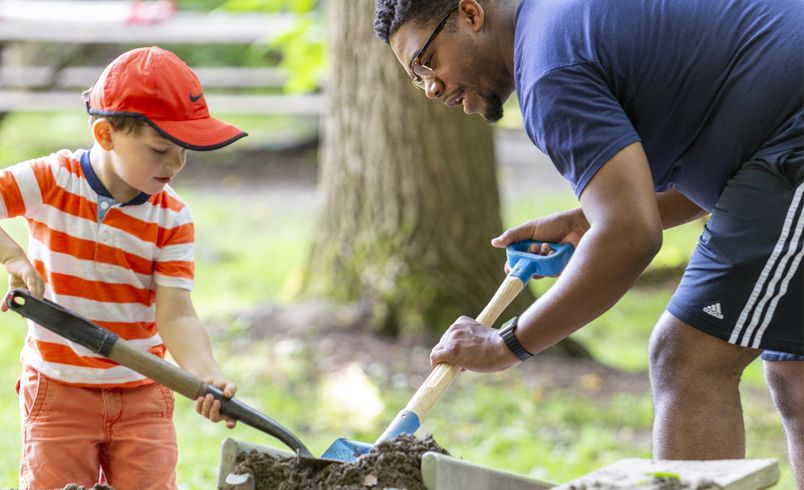Boys and the Need for Goodness of Fit
| November 2018In a recent edition of The Denver Post (August 31), there was a front-page article about the reading and writing proficiency of 3-8th grade students in Colorado. The two main findings of the statewide literacy tests are:
- Just over 50% of all students met or exceeded expectations
- Boys were significantly behind girls in every category (Whaley, 2018)
These results come after many years of intense academic focus on teaching early academic skills, beginning with the implementation of the federal No Child Left Behind act, and continuing with the standards approach to education, which has been used in all Colorado public schools over the last several years. Further, these low scores exist despite intensive efforts by schools to provide state-of-the art intervention for students struggling in reading and writing.
Ironically, a few weeks before this article, the same paper reported that the American Academy of Pediatrics recommends that young children need to play more (American Academy of Pediatrics, 2018).
Everyone in the early childhood field is well aware of the downward push of academics into ECE curricula and instruction. Even early childhood standards, frameworks, and curricular approaches that claim to meet young children’s social and emotional needs are dominated by cognitive and literacy goals and objectives. Many are now also adding STEM to this list.
But this does not seem to be working! School-age children are still not meeting expectations—especially boys.
Interestingly, this same Denver Post article that reported the low literacy scores of boys compared to girls described an interesting approach to this dilemma used in one school: allow boys to select the content of the books they want to read. Further, one teacher in this school has resorted to writing her own books that she believes are more accessible to young boys than many traditional books found in early childhood programs and elementary schools.
This approach is an example of what I call a goodness-of-fit: a view that traditional reading materials in many early childhood programs and schools do not ‘fit’ the interests, learning styles, and aspirations of many young boys.
In my new book, Oh Boy: Strategies for Teaching Boys in Early Childhood (published by Exchange Press, available for pre-sale now on https://www.childcareexchange.com), I explore this idea of goodness-of-fit for boys, not just in literacy, but in everything we do with young boys, age birth to 8 years of age. In this book I first describe areas in which I see a lack of goodness-of-fit, and then discuss how we can move toward a better goodness-of-fit between the needs of boys and the various physical, social, and emotional environments in which young boys grow, develop, and learn.
What is Goodness-of-Fit?
The statistics are very telling. Not only do young boys struggle with traditional academic proficiency, but more young boys are expelled and suspended than young girls; more young boys are placed in special education than girls—especially ADHD, specific learning disabilities, and emotional or behavioral disorders, and more boys than girls do not meet kindergarten entry requirements or are required to repeat kindergarten.
A major reason for these struggles by young boys is because the overall early childhood and elementary school approach currently used in the United States matches up better with the needs of young girls than those of young boys. For example:
- In early childhood programs and elementary education there are almost no males to provide healthy role models for boys.
- Behavioral expectations in our early childhood programs and elementary schools discourage movement, rough-and-tumble play, whole body learning, and tactile stimulation.
- The early childhood curriculum focuses on literacy, an area where, on average, young girls are advanced compared to young boys, for a variety of reasons.
- In our early childhood programs and schools, behavioral expectations—and often inappropriate punishment for not meeting these expectations—ignore the immature development of emotional regulation in many young boys.
- Problems with the quality of overall American education, politicized by the publication of the document, A Nation at Risk (1983), have resulted in a focus on teaching academics—and the restrictive behavioral requirements needed to teach these academics—at a much too young age.
The Solution
The solution to this dilemma, which I cover in detail in my book, is to create a better goodness-of-fit between how young boys develop, grow, and learn, and how we teach and support the development and learning of young boys. Here are just a few suggestions:
Increase play throughout the early childhood and elementary age. The American Academy of Pediatrics document, The Power of Play (2018), is absolutely correct—young children need lots and lots of play, both indoors and outdoors. And, while play is the best vehicle to support the development and learning of all young children, it is particularly helpful for young boys, because it:
- Encourages whole body movement
- Accommodates risks and trial and error behaviors
- Matches each individual child’s unique development, in all domains, including language, social, emotional, cognitive, physical, and so on
- Requires the child to learn to follow rules that are naturally logical and realistic—to them!—such as taking off your shoes before wading in the stream, focusing very carefully on an activity while stacking blocks as high as possible, and trying very hard to be social so other children will let you play with them.
- Is an integrated approach to learning—using all domains at the same time
Outdoor play also encourages physical activity, large body movement, and lots of action—all things boys love to do.
Increase the number of men in ECE. Boys need frequent, healthy contact with men for a variety of obvious reasons. There are essentially three ways to achieve this important goal:
- Increase the involvement of male family members in early childhood programs and schools—fathers, uncles, grandfathers, boyfriends, and older male siblings.
- Increase the number of male volunteers in early childhood programs and schools. Community service workers from high schools and colleges, senior volunteers, scouts, and other volunteers should be encouraged to work with young children.
- Increase male teachers. This, of course, is difficult to do for many reasons, but must be done if we expect to address this problem.
Revise our view of standards in ECE. According to William Cain (2005), “our hurry to prepare children for the future is having a particularly harmful effect on young children” (pp. 384). Cain goes on to suggest that we need to embrace the special strengths children possess at this age (birth to age 8), which involves the extensive use of play, exploration and development of all the arts, and providing young children with lots of rich contact with all aspects of nature (2005).
I also believe less focus on academics at an early age—and less focus on the behaviors needed to teach academics—will reduce the number of children, especially boys, who are currently being placed in special education. When we encourage children to move, to use their entire body while learning, and to engage in risk taking and trial-and-error learning, fewer boys will be viewed as needing special education services.
Conclusion
Research shows that, even after years of intensive teaching of academics at an early age, school-age children are still struggling to meet academic expectations in literacy. This is especially true for boys. Clearly our approach to teaching young children, not just in literacy, but all subjects, is simply not working. While this is true for all children, boys in particular struggle. Rather than forcing young boys to learn academics too soon, we need an approach to early care and education that matches the way young boys grow, learn and develop: a goodness-of-fit. This goodness-of-fit should include a focus on play, extensive exploration of all of the arts, and many opportunities to engage in rich and varied contact with nature.
Read more:
hub.exchangepress.com/shop/oh-boy/
References
American Academy of Pediatrics (2018). The power of Play: How fun and games help children thrive (August 30, 2018). From Healthily Chiildren.org.. Retrieved from https://www.healthychildren.org/English/ages-stages/toddler/fitness/Pages/Caution-Children-at-Play.aspx
Cain, W. (2005). Theories of development. Concepts and applications (5th ed.). Upper Saddle River, NJ: Pearson.
National Commission on Excellence in Education (1983). A nation at risk: The imperative for school reform. Washington, DC: U.S. Government Printing Office.
Whaley, M. (2018, August 31). Letting boys read what they want. Colorado educators say it can help boost lagging language scores. The Denver Post, pp1A - 15 A.











